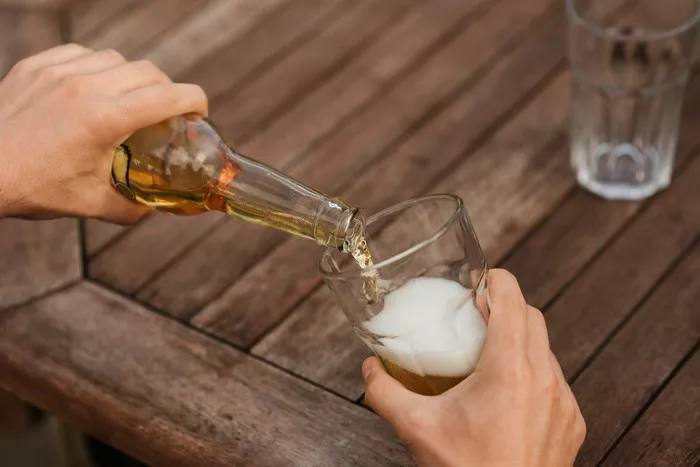Beer, an age-old beverage cherished for its diversity in flavor and aroma, undergoes a fascinating process known as secondary fermentation. This crucial stage in brewing contributes significantly to the beer’s final character and quality. But what exactly is secondary fermentation in beer, and how does it impact the beer-making process? Let’s delve into the intricacies of this pivotal phase to uncover its significance, methods, and effects on the final brew.
Defining Secondary Fermentation in Beer
Secondary fermentation in beer refers to a subsequent fermentation process that occurs after the primary fermentation. While the primary fermentation primarily involves the conversion of sugars into alcohol and carbon dioxide by yeast, secondary fermentation serves several purposes, such as refining flavors, enhancing clarity, and maturing the beer. This phase can take place in a separate vessel, such as a secondary fermenter, or within the same vessel used for primary fermentation, depending on the brewer’s technique.
One of the primary reasons for secondary fermentation in beer is the reduction of unwanted byproducts. During primary fermentation, yeast produces various compounds and byproducts, including diacetyl and acetaldehyde, which can impart off-flavors to the beer. Secondary fermentation allows the yeast to further metabolize these compounds, resulting in a cleaner and more refined taste.
The Process of Secondary Fermentation
After the initial vigorous fermentation in the primary stage, the beer is transferred to a secondary fermenter or left in the primary vessel for further conditioning. This step is particularly crucial for high-alcohol or complex beers like ales, stouts, or sour beers, where extended aging or additional flavor development is desired.
During secondary fermentation, any remaining fermentable sugars are consumed by the yeast, contributing to a drier finish and potentially higher alcohol content. Additionally, this phase allows suspended yeast and other particles to settle, improving the beer’s clarity. Brewers may opt to add additional ingredients during secondary fermentation, such as hops, fruits, spices, or wood chips, to impart specific flavors and aromas.
The duration of secondary fermentation varies widely based on the beer style and desired characteristics. Some beers may only require a few days, while others, like barrel-aged beers or sour ales, might undergo months or even years of secondary fermentation for optimal development.
Impact on Flavor and Aroma
Secondary fermentation in beer plays a pivotal role in shaping the final flavor and aroma profile. As yeast continues to work in the secondary phase, it refines the beer’s taste by metabolizing unwanted compounds and contributing to the formation of new flavor compounds.
The process can lead to the development of more complex flavors and aromas. For instance, in the case of barrel-aged beers, the wood imparts tannins, vanilla, or other unique characteristics into the beer during secondary fermentation. Moreover, when fruits or spices are added during this phase, they infuse the beer with their distinct flavors, creating a harmonious blend.
Different Approaches to Secondary Fermentation
Brewers employ various methods to carry out secondary fermentation, each influencing the beer’s final outcome differently. One common approach involves racking the beer into a separate vessel, such as a carboy or keg, after primary fermentation. This method helps in separating the beer from the trub (sediment) and allows for clearer and more controlled conditioning.
Another technique involves conducting secondary fermentation directly in the primary vessel by leaving the beer on the yeast cake, a layer of yeast settled at the bottom of the fermenter after primary fermentation. This method can be suitable for certain styles where extended contact with the yeast contributes positively to the beer’s flavor and mouthfeel.
Moreover, some brewers choose to perform secondary fermentation in bottles by adding a small amount of priming sugar and fresh yeast before sealing the bottles. This induces a secondary fermentation within the sealed environment, producing carbonation and allowing flavors to further develop over time.
Benefits and Considerations of Secondary Fermentation
Secondary fermentation offers several advantages, including improved beer clarity, enhanced flavor development, and the opportunity for additional ingredient incorporation. By allowing the beer to mature further, it aids in creating a more balanced and refined end product.
However, while secondary fermentation can positively impact beer quality, it also presents some considerations. Extended exposure to oxygen during transfer or secondary aging can lead to oxidation, causing off-flavors like cardboard or sherry-like notes. Moreover, the risk of contamination increases if proper sanitation practices are not followed during the transfer process.
Conclusion
In essence, secondary fermentation in beer is a crucial stage that significantly influences the beer’s flavor, aroma, and overall quality. This phase, whether conducted in a separate vessel or within the primary fermenter, allows for further refining of the brew, aiding in the development of complex flavors and aromas while enhancing clarity and mouthfeel.
Understanding the intricacies of secondary fermentation empowers brewers to harness its potential effectively, creating beers that captivate the senses and delight palates. By carefully managing this phase and considering various techniques and ingredients, brewers can craft beers that embody craftsmanship, complexity, and uniqueness, enriching the diverse world of brewing.


